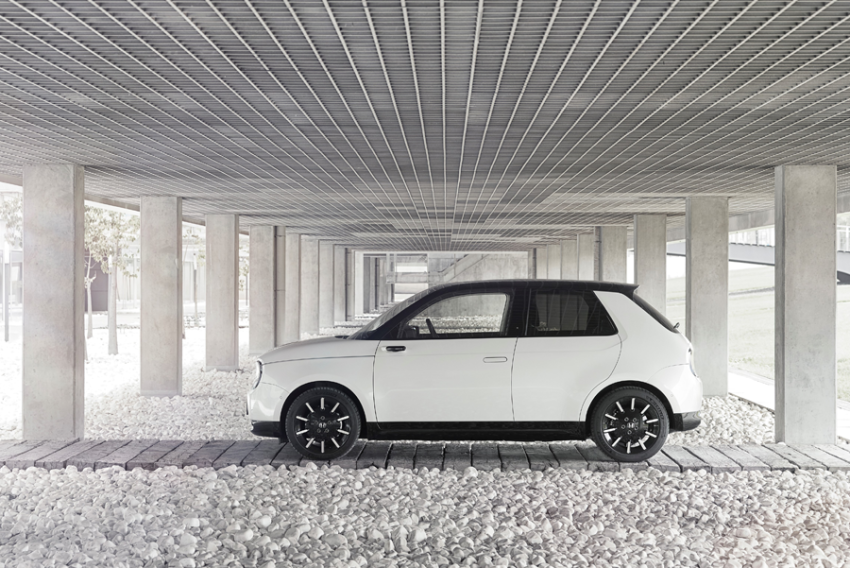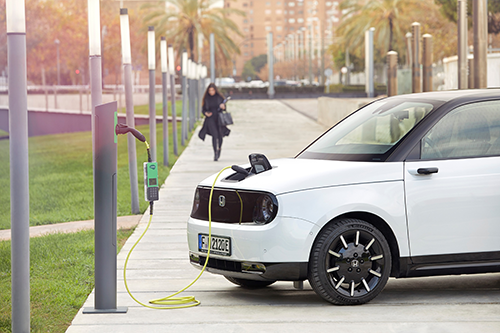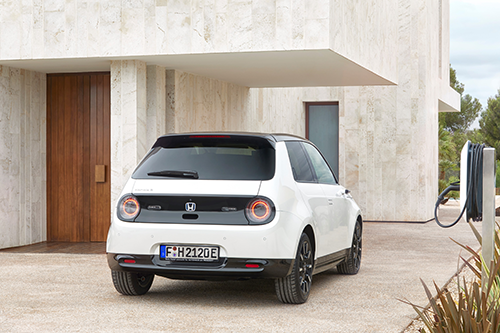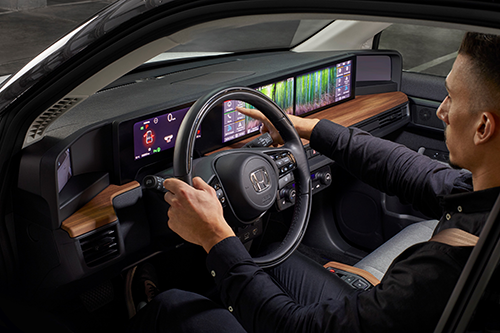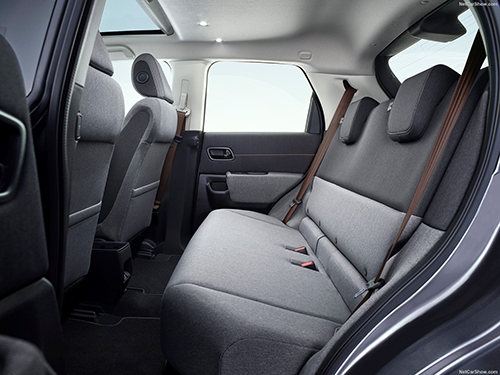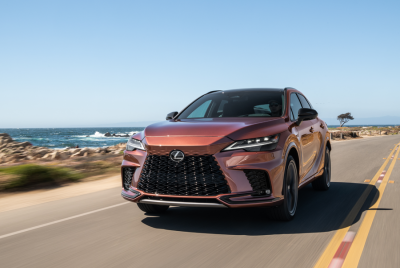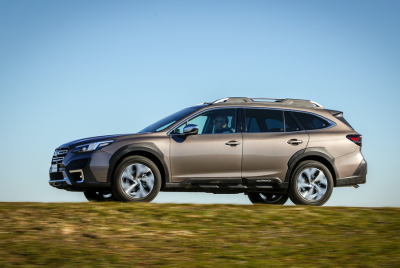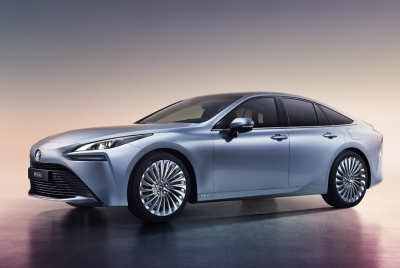Half a century has passed. Fifty years after the appearance of the first Honda Civic – eleven generations of the Japanese city car since 1972 - the Tokyo-based company reaffirms its concept of urban mobility with the zero-emission "e" model. A vehicle designed for the urban environment and perhaps a little more that draws its inspiration from the first Civic, with a modern interpretation. A decidedly minimal design, both externally and internally, recall the popularity that the famous forerunner had but updated in a modern electric version, with two-way charge management, using V2G (Vehicle to Grid) technology, so as to transform the car into a mobile generator for energy exchange. Simplicity in design and aesthetics does not mean austere, quite the contrary, given the sophisticated solutions adopted and the particularly complete on-board equipment, right from the entry level, which is not so entry after all.
Manga face
At first glance the new Honda “e” might look like something taken right out of a cartoon. An amusing and friendly feel outlines the design of the front end of the car dominated by two round headlights, resembling a wide-eyed stare like in Japanese cartoons. Do not be fooled, these are advanced light clusters with 12 individual LEDs each, with automatic control of intensity and modulation, which enclose in a single body daytime running lights, position lights, low beams, and indicators. The two rear lights are also LEDs, replicating the visual impact of the front with every function integrated into a single optic. And then that minimalist look, except for the charging socket placed centrally on the hood protected by a see-through hatch, a distinctive element that always allows a glimpse of the status lights. The automatically retractable handles, which can be activated with a smartphone, are not the only peculiarity that characterizes the sides, which are simple and do not feature any spoilers or aerodynamic wizardry. No rear-view mirrors in the little Honda replaced by two SCMS camera with flash windows, pillars in contrasting colours and large wheel arches enlarged to accommodate 16- or 17-inch tires. Very compact, despite the access through four doors, with dimensions not much larger than any of the Key-cars so loved by Japanese motorists, the eco-friendly Honda “e” measures less than 3.9 metres in length, 1,75 metres wide and 1.51 m high.
However, thanks to the absence of the powertrain/transmission unit at the front (moved to the rear), thus eliminating the central encumbrance between the two front seats, together with the generous 2.53 metre wheelbase, that the car gains space inside. With the exception of the luggage compartment, whose volume is penalized by the shift of the mechanical parts. At the end of the day, as this vehicle would hardly be used for lengthy holiday trips, the choice has been to privilege comfort in everyday life, ensuring a useful volume for small transport ranging between 171 and 861 litres. Honda's “human centred” philosophy can be seen both in the rational arrangement of displays and devices, and in the man/machine interface which, in addition to the usual manual controls, can also take place through voice commands or remotely via a smartphone. For example, to program climate control, charging phases or geolocation. The My Honda+ management app and the artificial intelligence system APH (Honda Personal Assistant), capable of self-learning and context recognition, thus become an integral part of interaction, inside and outside the vehicle. The entire front dashboard is occupied several monitors, starting with 6" monitors dedicated to rear vision, in place of the traditional mirrors, with a wide-view option. Then there is the one in front of the driver, an 8.8" TFT, whose digital instrumentation shows the usual driving information, not to mention a double central screen, 2 touchscreens placed side by side, each 12.3" (which extend all the way to the front of the passenger) through which all on-board functions can be managed, even separately, from navigation to energy consumption management, including the streaming videos or films (when the vehicle is stationary).
Hybrid and connected
Those who deal with mechanical maintenance will immediately notice this: the “e” is not an evolution of an already existing model, as happens with most hybrids. This is an entirely dedicated design with which Honda develops for the first time a platform conceived exclusively for electric mobility, placing both the motor and traction axle at the rear. The battery pack, positioned under the floor, contributes significantly to lowering of the centre of gravity, just 500 mm from the ground, and to the optimal 50/50 weight distribution. A positively balanced design influencing all the vehicle's dynamics, supported by four independent suspensions which, along with a precise and servo-assisted steering system with variable gear ratio (VGR), offers adequate handling as well as rapid response to manoeuvres in urban environments.
Despite its urban vocation, the 136HP (Base) or 154 HP (Advance) DC electric unit ensures a top speed limited to 145 km/h, with rapid acceleration from 0-100 km/h in 9 and 8.3 seconds respectively, thanks to the 32.1 kgm of torque available right from the start. A single ratio, single gear, eliminates the need for gearbox and clutch, simplifying acceleration and braking even through a single pedal, adjusting the intensity of the response through a selector on the multi-function steering wheel. Then, by acting on the driving modes, normal or sport, the amount of power supply can also be changed, favouring either lower energy consumption or verve. Adequate for daily use, the “e” can guarantee a range of up to 222 km, which is reduced to 210 km with the sportier 17" wheels.
Recharging times can differ greatly depending on the system used: a full charge of the 35.5 kWh lithium-ion batteries, with a water-cooling system (also heated) to maintain optimal operating temperatures, means it takes just over 4 hours from a 7.4 kW public socket, about 18 hours from the domestic Honda Power Charger, which is reduced to just 30 minutes to reach 80% from a CCS2 fast charge point. All operations, of course, can be programmed and monitored remotely via smartphone. Sensors, radars and cameras handle a long list of ADAS functions, including ACC adaptive cruise control, LKAS lane keeping, TSR sign recognition and the Honda Parking Pilot. Considering the lower stress on the front end, given the absence of the transmission and motor, the optimal balance between stability and responsiveness has been achieved through the adoption of differentiated wheels, between front and rear, with dedicated 16-inch alloy wheels and a sportier 17" option for the more powerful Advance version.
